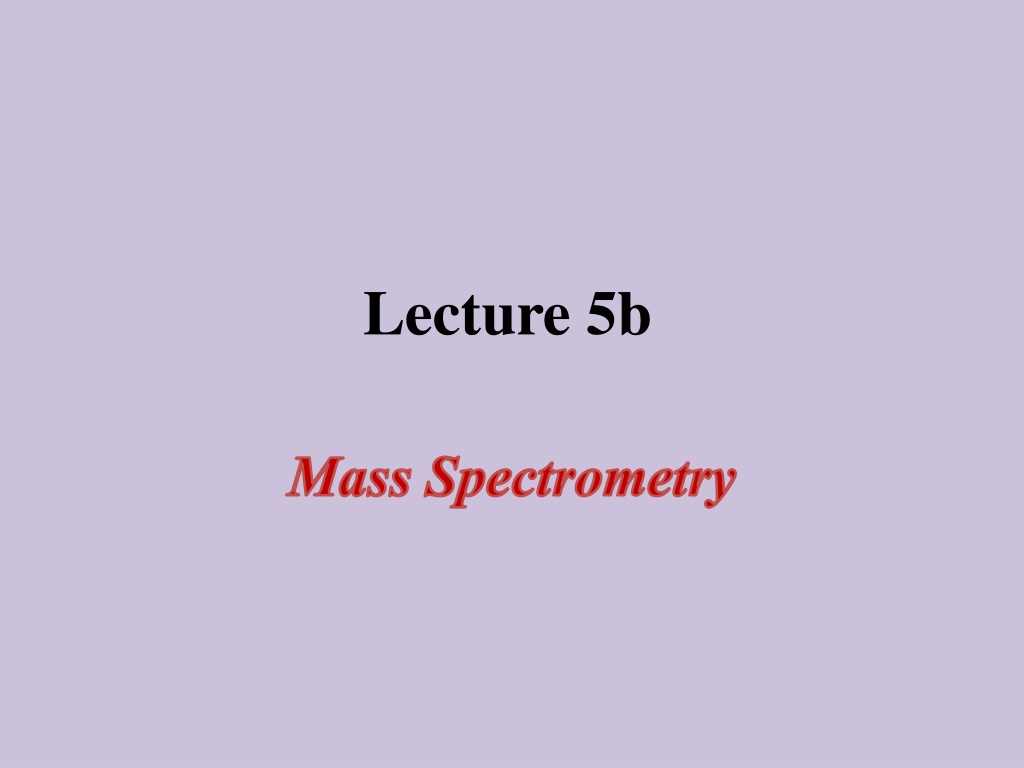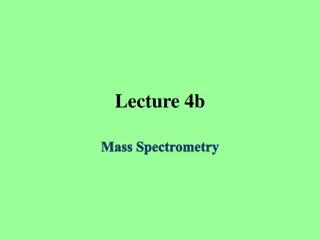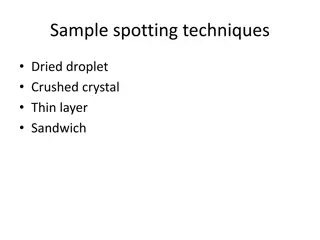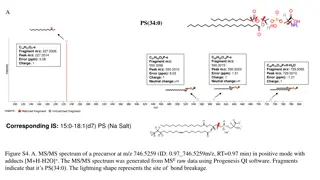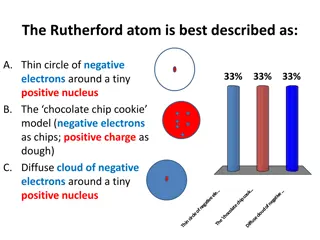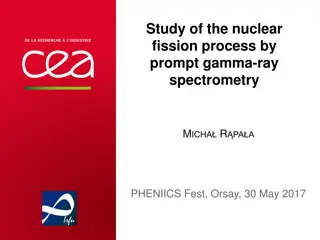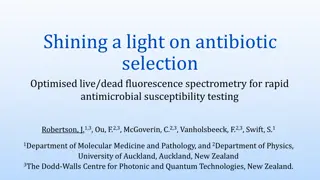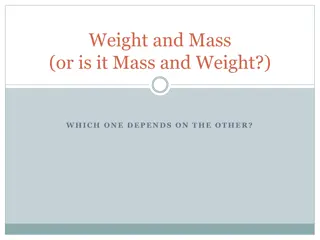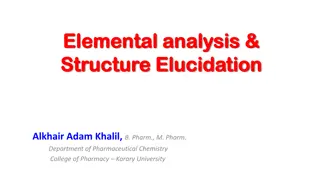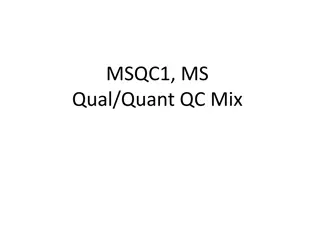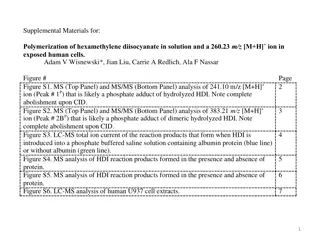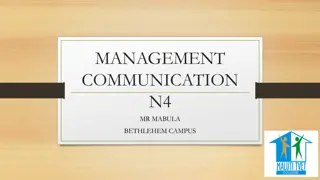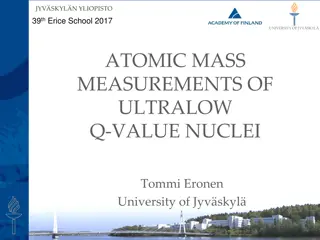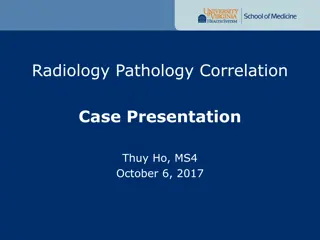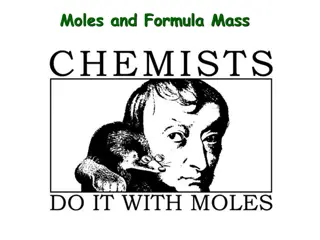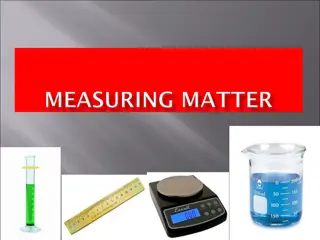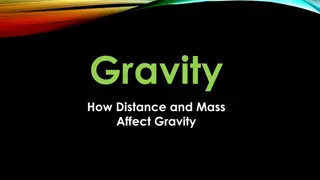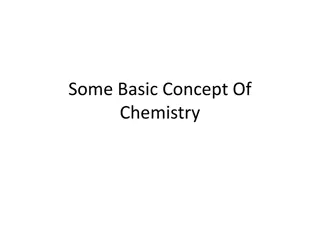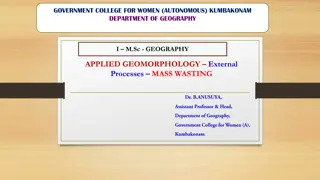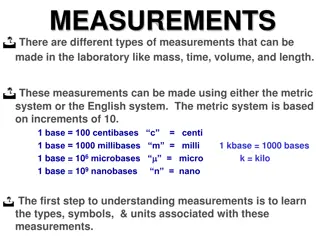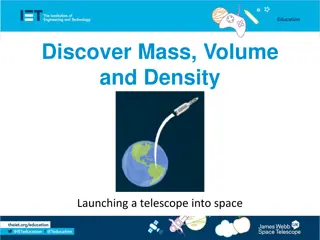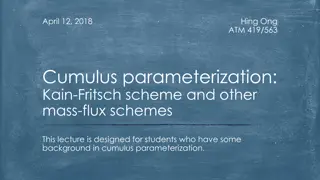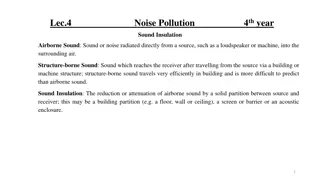Understanding Mass Spectrometry: From History to Techniques
Explore the fascinating history of mass spectrometry, from the discovery of isotopes by J.J. Thomson and F.W. Aston to modern developments like the quadrupole mass spectrometer. Learn about Electron Impact Mass Spectrometry, its techniques, and the information derived from mass spectra, including molecular ion peaks and base peaks.
Download Presentation

Please find below an Image/Link to download the presentation.
The content on the website is provided AS IS for your information and personal use only. It may not be sold, licensed, or shared on other websites without obtaining consent from the author. Download presentation by click this link. If you encounter any issues during the download, it is possible that the publisher has removed the file from their server.
E N D
Presentation Transcript
Lecture 5b Mass Spectrometry
History I File:Discovery of neon isotopes.JPG J. J. Thomson was able to separate two neon isotopes (Ne-20 and Ne-22) in 1913, which was the first evidence that isotopes exist for stable elements (Noble Prize in Physics, 1906) F. W. Aston discovered isotopes in a large number of nonradioactive elements by means of his mass spectrograph (first one build) (Noble Prize in Chemistry, 1922).
History II H. Dehmelt and W. Paul built the first quadrupole mass spectrometer in 1953 (Noble Prize in Physics, 1989) K. Tanaka and J.B. Fenn developed the electrospray and soft laser desorption method, which are used for a lot of proteins (Noble Prize in Chemistry, 2002) http://www.lamondlab.com/MSResource/images/lcms/ESI.jpg
Electron Impact Mass Spectrometry I Electron Impact (EI) is hard ionization technique An ionizing beam of electrons generated in the ionization chamber causes the ionization and/or fragmentation of the molecule The higher the energy of the electrons is, the more fragmentation is observed up to the point vacuum 70 eV Magnetic Field (H) accelerator plates cathode Inlet AB AB AB From GC e- AB AB+ B+ AB+ A+ B+ AB+ A+ anode B+ Sample Chamber Ionizing Chamber AB+ AB+ AB+ Detector a
Electron Impact Mass Spectrometry II Mass spectrometers are often connected to gas chromatographs (GC/MS) They only require very small amounts of sample (~1 ng) The mass spectrometer employs an ultrahigh vacuum (<10-6 torr) Since there is only one detector, the magnetic field has to be scanned during the acquisition in order to collect ions with different m/z ratio, which arrive at different times The neutral fragments do not interact with the magnetic field and are lost in the process (bounce into the walls)
Information from the Mass Spectrum I The mass spectrum is a plot of the relative ion abundance versus m/z (mass/charge) The molecular ion peak (=parent peak) is the peak that is due to the cation of the complete molecule The base peakis the largest peak in the spectrum (=100 %) Stevenson s rule: When a fragmentation takes place, the positive charge remains on the fragment with the lowest ionization energy The more stable the fragment is, the higher the abundance of the ion is resulting in a larger peak because its lifetime is longer Commonly observed stable ions: m/z=43 (acylium or iso-propyl), m/z=57 (tert.-Bu or propylium), m/z=91 (benzyl), m/z=105 (benzoyl), etc.
Information from the Mass Spectrum II Molecular Mass Presence of an odd number of nitrogen atoms (if molecular mass is odd) OH N N N H3C C CH2CH3 N N N H Mol. Wt.: 70 Mol. Wt.: 78 Mol. Wt.: 79 Mol. Wt.: 80 Mol. Wt.: 74 Mol. Wt.: 81 The presence of certain fragments/groups gives rise to peaks with a high abundance i.e., benzyl (tropylium), acylium, etc. Presence of certain functional groups result in characteristic fragments being lost (mass difference) or being observed i.e., terminal alcohols exhibit a peak at m/z=31 due to [CH2OH]-fragment
Information from the Mass Spectrum III Number of carbon atoms from the ratio of [M+1]/[M]-peaks (1.1 % for each carbon) i.e., the ratio would be 11 % (=0.11) if there were ten carbon atoms in the fragment The McLafferty rearrangement is an intramolecular hydrogen transfer via a six-membered transition state from a -carbon atom leading to a -cleavage to the keto-group H XH X + H H O O + H3CO H3CO m/z=102 m/z=74
Information from the Mass Spectrum IV If several chlorine and/or bromine atoms are present in the molecule, isotope clusters consisting of (n+1) peaks are found in the spectrum Pattern for halogen clusters X X2 X3 Elements Cl Br 100:32 100:98 100:64:10 51:100:49 100:96:31:3 34:100:98:32 Elements Br Br2 Cl 77:100:25 44:100:70:14 Cl2 61:100:46:6 38:100:90:32:4 Cl3 51:100:65:18:1.7 31:92:100:50:12:1
Fragmentation I Example 1: Butyrophenone (C6H5COCH2CH2CH3) (PhCOCH2CH2CH3) m/z=105 (Ph-C O)+ m/z=148 (M)+ m/z=120 (M-C2H4)+
Fragmentation II Example 2: 1-Phenyl-2-butanone (C6H5CH2COCH2CH3) m/z=57 (CH3CH2CO)+ m/z=91 (PhCH2)+ No peak at m/z=120 m/z=148 (M)+
Fragmentation III Example 3: 4-Phenyl-2-butanone (C6H5CH2CH2COCH3) m/z=43 (CH3CO)+ m/z=105 (PhCHCH3)+ m/z=148 (M)+ m/z=91 (PhCH2)+
Epoxide Analysis Styrene oxide Phenylacetaldehyde Acetophenone Differences m/z=91 ([C7H7]+): only found in phenylacetaldehyde and styrene oxide, but not in acetophenone m/z=105 ([C7H5O]+): only found in acetophenone! m/z=119 ([C8H7O]+): only found in styrene oxide! m/z=92 ([C7H8]+): due to McLafferty rearrangement!
Chemical Ionization Mass Spectrometry I Chemical Ionization is considered a soft ionization technique It uses less energy, which results in less fragmentation, allowing in many cases the observation of the molecular ion peak Methane (CH4), isobutane (C4H10) or ammonia (NH3) is used as gas Primary Ion formation: CH4 + e- CH4+ + 2e- Secondary Ion formation: CH4 +CH4+ Product formation: M + CH5+ CH4 + [M+H]+ AH + CH3+ A+ + CH4 Chemical ionization can be performed in PCI (positive mode) or NCI(negative mode) The NCI mode is used for PCBs, pesticides and fire retardants because they contain halogens with a high electronegativity, which makes the detection more sensitive for the compounds CH5+ + CH3
Chemical Ionization Mass Spectrometry II Comparison of (a) EI, (b) PCI and (c) NCI for Parathion-ethyl (pesticide) EI The EI spectrum shows significantly more fragmentation than the PCI and the NCI spectrum and therefore provides more structural information EI: 291 [M]+, 109 [C2H5OPO2H]+ 137 [(C2H5O)2PO]+ PCI: 292 [M+H]+, 262 [M-C2H5]+ NCI: 291 [M]-, 154 (C2H5O)2PSH]- 169 [O2NC6H4O]- PCI NCI
